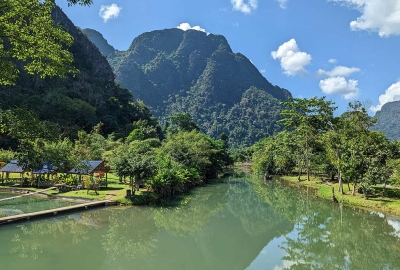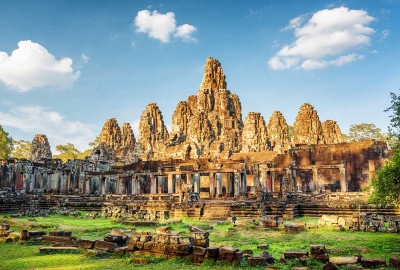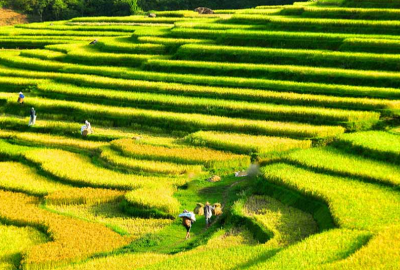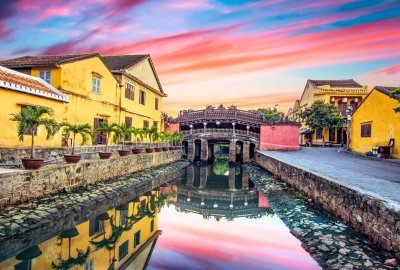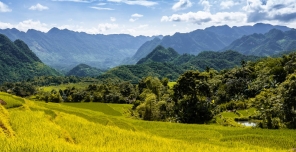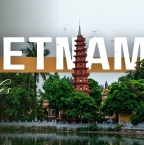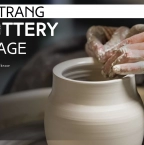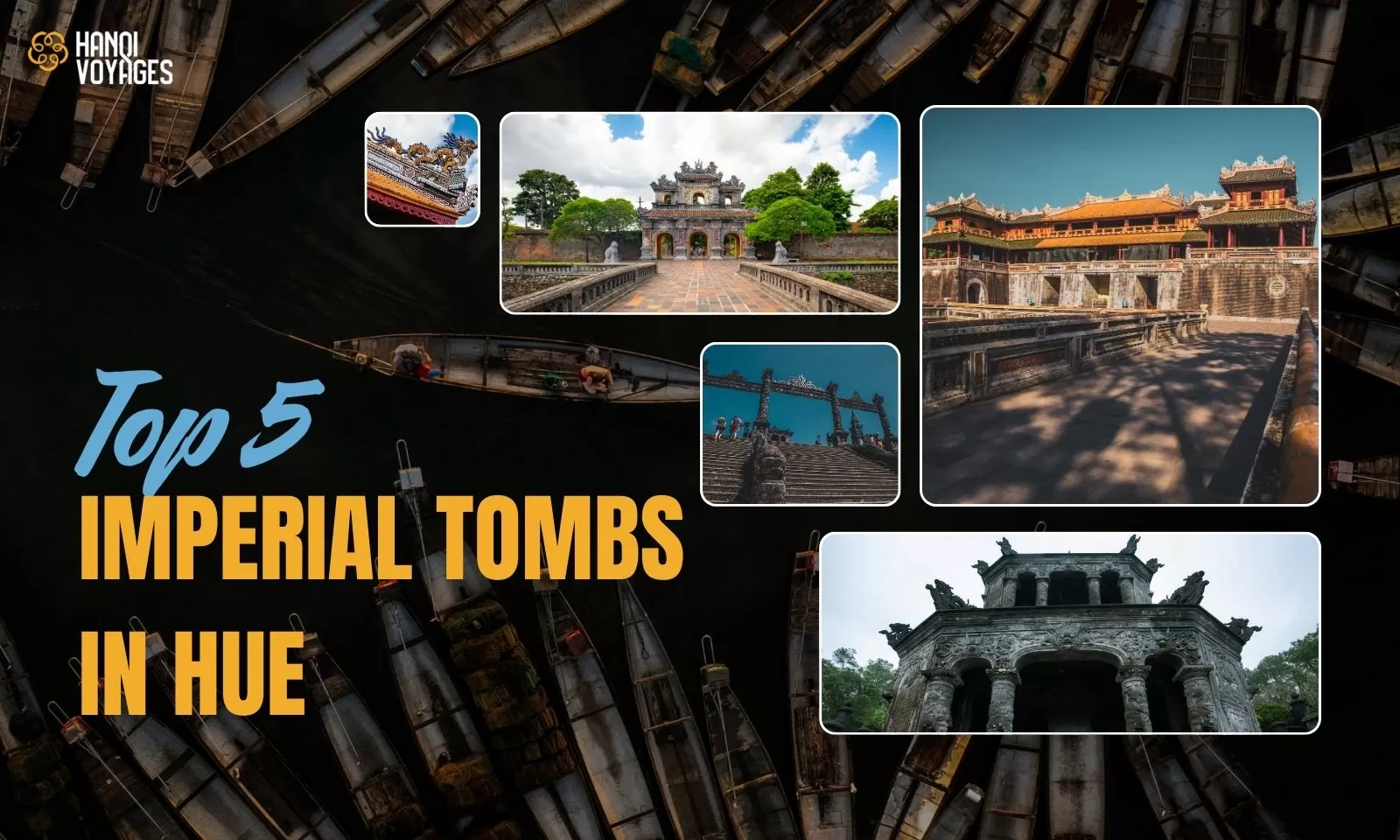
Top 5 must-see imperial tombs in Hue for your Vietnam trip

Hue, the former imperial capital of Vietnam, is home to some of the nation’s most significant historical sites. Among them, the imperial tombs in Hue stand out as grand monuments honoring the Nguyen Dynasty emperors. Blending traditional Vietnamese architecture with tranquil landscapes, these tombs provide a fascinating glimpse into the royal past.
If you're planning a trip to Hue, don’t miss these top 5 must-see imperial tombs, where history and tradition come together in a truly memorable way.
Table of Contents
Best time to explore Hue: A seasonal travel guide
The best time to explore Hue is from January to April, when the weather is cool and pleasant. The skies are clear, making it perfect for wandering through the ancient tombs and historic sites. This is also when the city’s beauty is at its peak, with blooming flowers and a serene atmosphere.
If you prefer to avoid the crowds and experience a different side of Hue, visiting during other times of the year can be a great choice. To enjoy Hue during those periods, a few simple preparations can make your trip smoother.
Check the weather forecast to adjust your plans in case of heavy rain or storms.
Pack essentials like an umbrella, raincoat, and waterproof shoes to stay dry while exploring the imperial tombs in Hue.
For easier travel, opt for taxis or rental cars instead of walking or using open transport. Using Vietnam travel apps can also help you find the best prices.
No matter when you go, each season in Hue offers its own charm and historical wonders to discover!
For more information about Vietnam’s weather: Best time to visit Vietnam
Top 5 imperial tombs in Hue for a historical journey
For a journey through Vietnam’s rich culture, the imperial tombs in Hue are a must-visit. These majestic sites showcase impressive architecture, cultural significance, and the stories of Nguyen emperors. Here are the top 5 you shouldn’t miss on your Vietnam journey.
Tomb of Gia Long
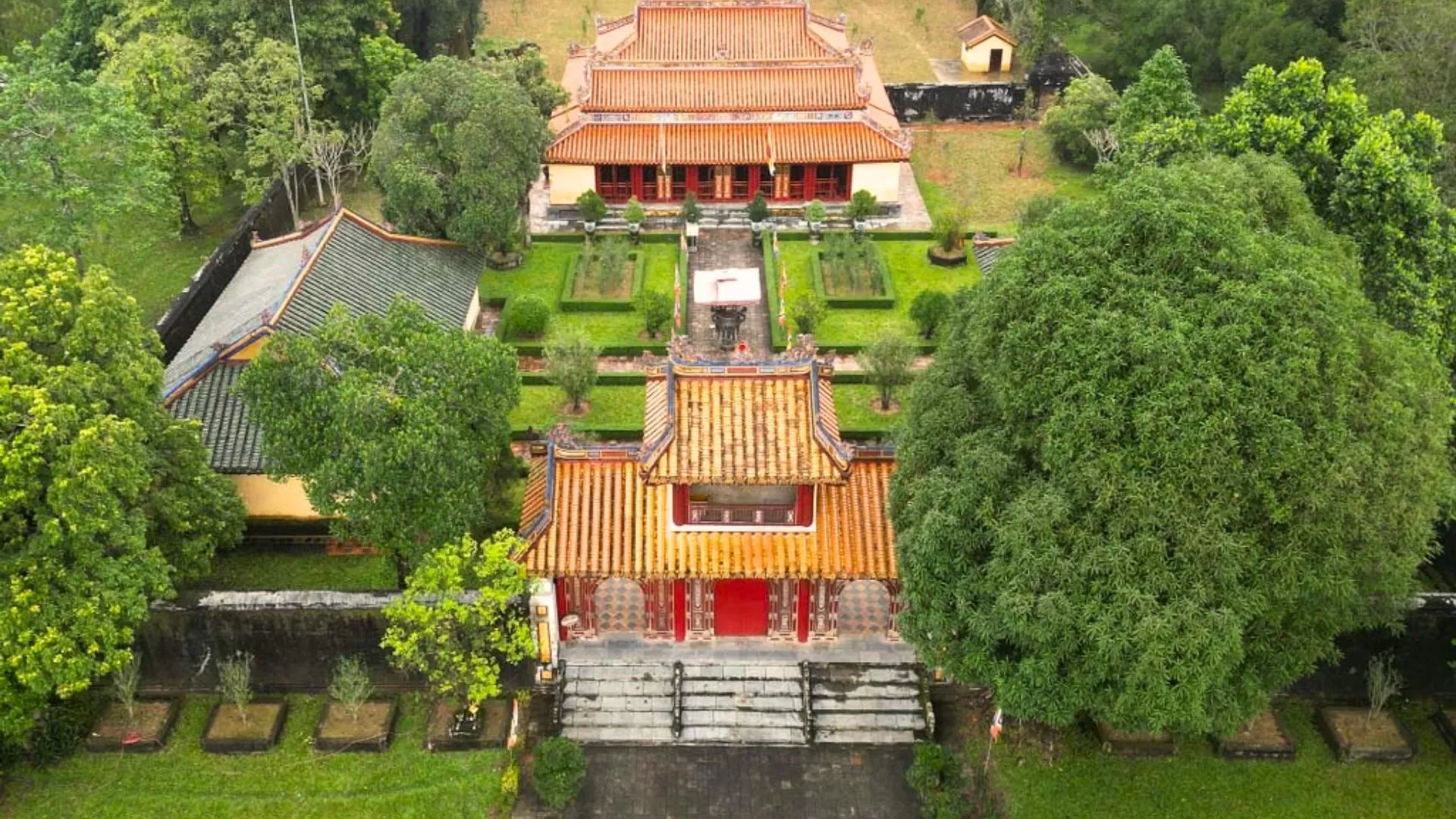
Location: Huong Tho Commune, Huong Tra district, Hue
Opening hours: 7:00 AM - 5:30 PM daily
Entrance fee: about $6 per adult, children under 12 years old: free
The tomb of Gia Long, part of the Hue imperial tombs, is the final resting place of Vietnam’s first Nguyen emperor. Built between 1814 and 1820, this tomb complex is known for its vast scale and natural surroundings, harmonizing mountains, rivers, and forests in a serene landscape. Unlike other tombs, it remains less crowded, offering a peaceful historical experience.
The tomb is about 16 km southwest of Hue, accessible by car and motorbike or take a scenic cruise on the Perfume River, offering a peaceful and scenic view of this historic site.
Tomb of Minh Mang
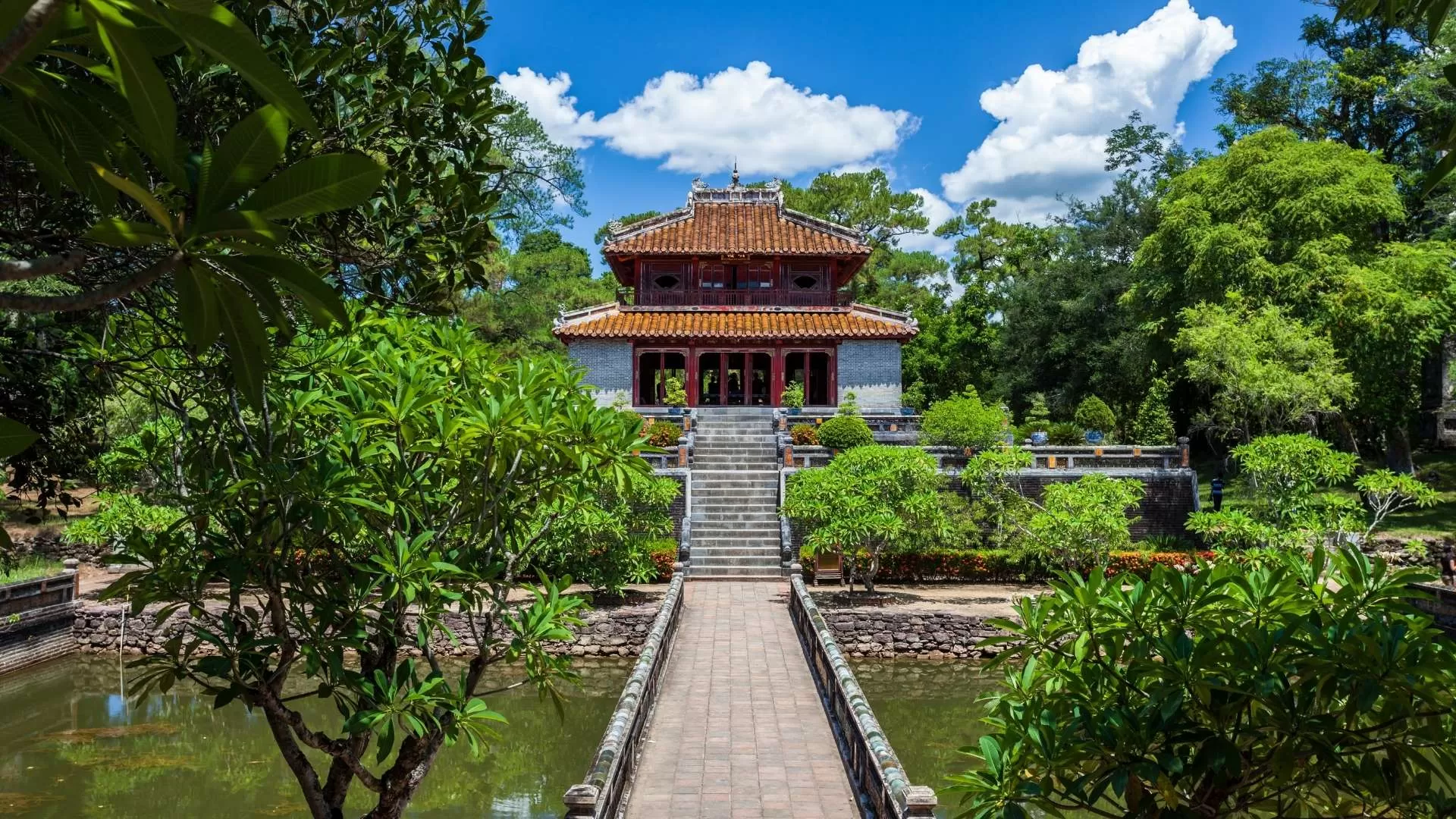
Location: Huong Tra Town, Hue
Opening hours: 6:30 AM - 6:00 PM daily
Entrance fee: adult: about $6, children (7-12 years old): about $1 and free for children under 6 years old
The Minh Mang Tomb is a grand imperial mausoleum dedicated to Emperor Minh Mang and is part of the UNESCO-listed Hue royal tombs. Built during the Nguyen Dynasty and completed in 1843, this vast complex features 40 architectural structures harmonizing with nature.
Minh Mang's Tomb is home to many notable tourist attractions such as the Dai Hong Mon Gate, Minh Lau Pavilion, and other sacred sites, reflecting the emperor’s vision and philosophy. Surrounded by lush gardens and a tranquil lake, the tomb offers a serene atmosphere and a glimpse into Hue’s royal heritage.
Visiting the Tomb of Minh Mang? Explore this tour: Vietnam family tour 18 days
Tomb of Thieu Tri
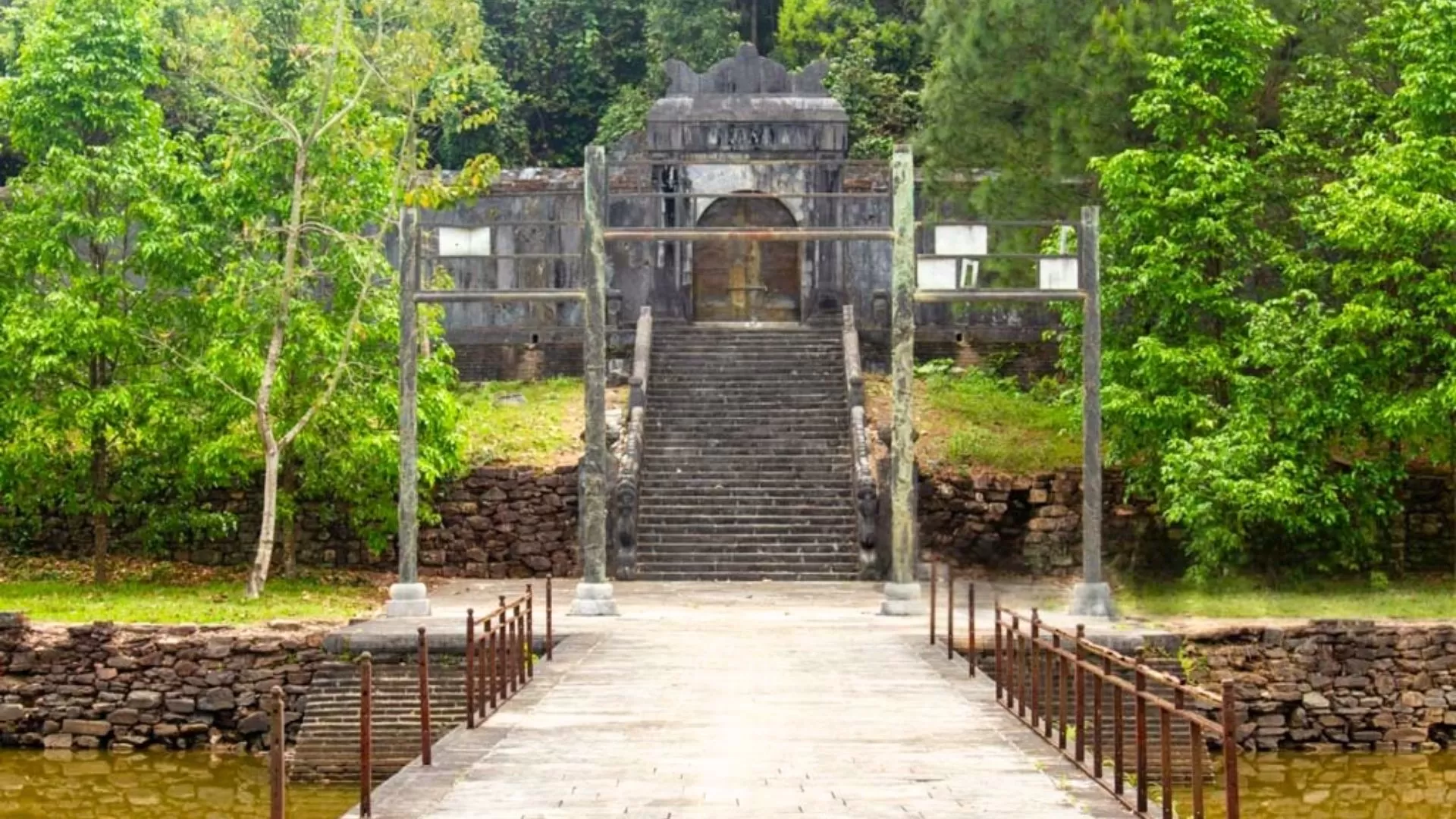
Location: Cu Chanh village, Thuy Bang commune, Hue
Opening hours: 7:00 AM - 5:00 PM daily
Entrance fee: about $2 for adults and free for children under 12 years old
Thieu Tri Tomb, also known as Xuong Lang, is one of the remarkable imperial tombs in Hue and the final resting place of Emperor Thieu Tri - the third ruler of the Nguyen Dynasty. Recognized as a UNESCO World Heritage Site on December 11, 1993, this tomb reflects the grandeur of Vietnam’s royal history while maintaining a serene, natural setting.
Architecturally, Thieu Tri Tomb shares many features with the tombs of Minh Mang and Gia Long but also incorporates distinctive elements that set it apart. As one of the most significant historic sites in Hue, it offers visitors a deeper understanding of the Nguyen Dynasty’s legacy.
Explore UNESCO sites in Vietnam on our tour: Vietnam Cambodia tour 18 days All Unesco sites
Tomb of Tu Duc
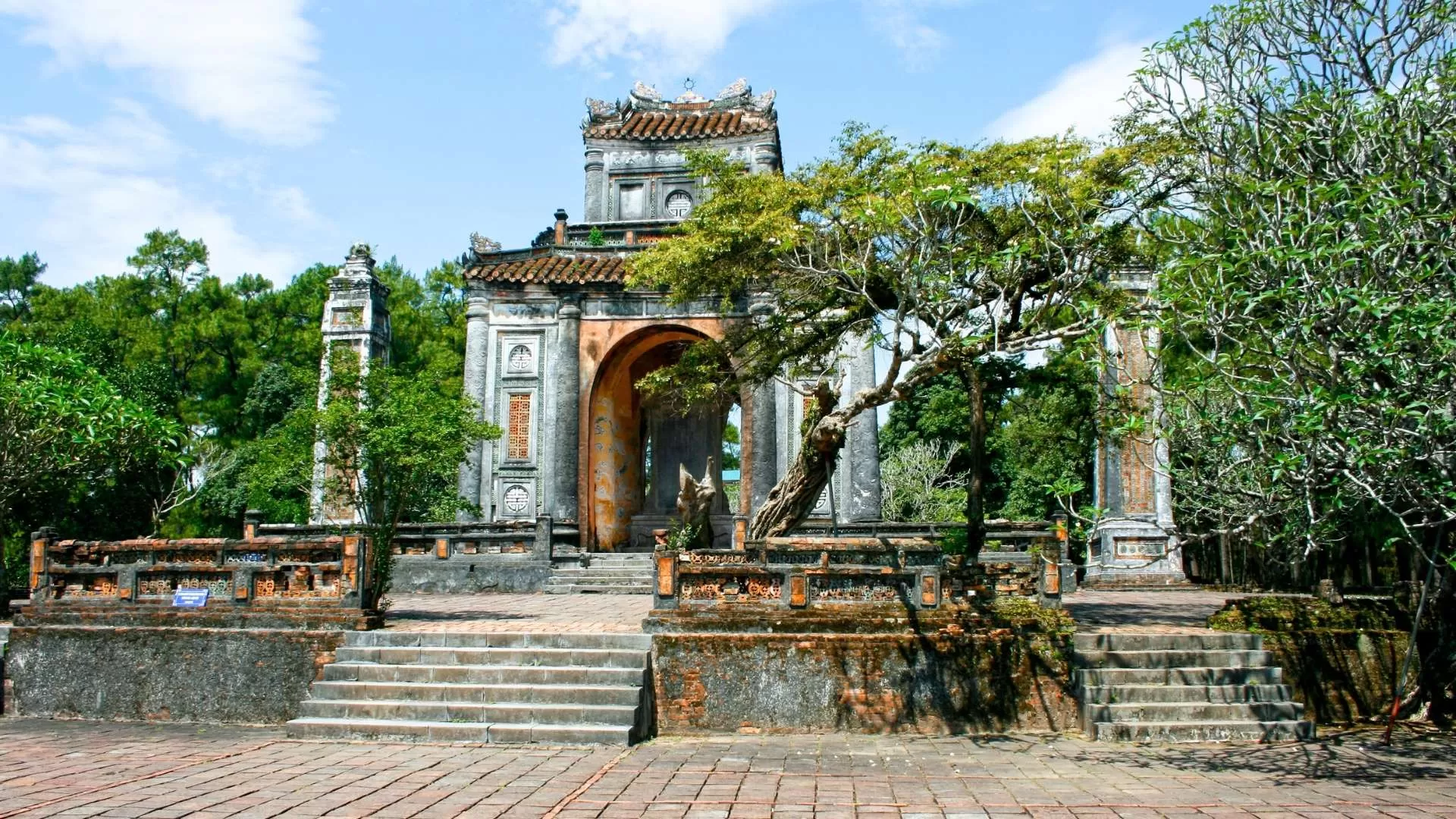
Location: Thuy Bieu commune, Thuy Xuan ward, Hue
Opening hours: 6:30 AM - 6:00 PM daily
Entrance fee: adult: about $6, children (7-12 years old): about $1 and free for children under 6 years old
The Tomb of Tu Duc, also known as Khiem Lang, is one of the most elegant imperial tombs in Hue. Built between 1864 and 1867, it served as both a retreat and final resting place for Emperor Tu Duc. Covering a vast area, the complex features nearly 50 structures, including Vu Khiem Gate, Khiem Cung Gate, Luu Khiem Lake, and Khiem Mausoleum.
Its harmonious blend of elegant architecture and serene landscapes showcases the emperor’s refined taste, making it one of the most beautiful historic sites in Hue. Unlike other Hue imperial tombs, Tu Duc’s tomb blends harmoniously with nature, making it one of the most picturesque historic sites in Hue.
Tomb of Khai Dinh
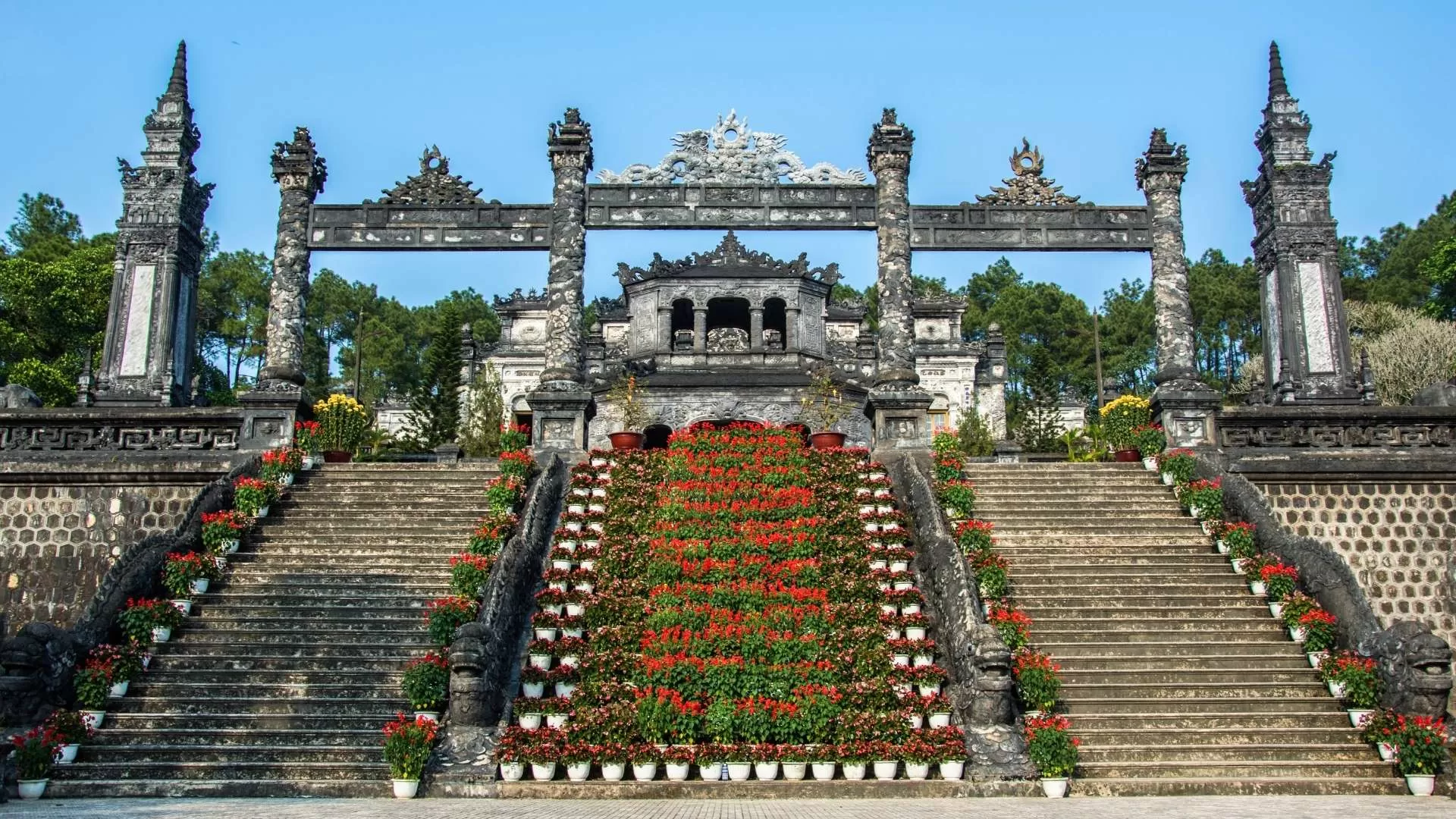
Location: Chau Chu Mountain, Huong Thuy District, Hue
Opening hours: 7:00 AM - 5:30 PM daily
Entrance fee: adult: about $6, children (7-12 years old): about $1 and free for children under 6 years old
The Tomb of Khai Dinh, also known as Ung Tomb, is the most elaborate and unique among the Hue royal tombs. Built between 1920 and 1931 for Emperor Khai Dinh, the 12th ruler of the Nguyen Dynasty, this tomb stands out for its fusion of Vietnamese, Chinese, and European architectural styles.
Visitors are greeted by a long staircase flanked by imposing statues leading to the Thien Dinh Palace, the tomb’s central hall. Inside, the walls and ceiling are adorned with elaborate glass and ceramic mosaics, while a golden effigy of Emperor Khai Dinh sits beneath a beautifully painted ceiling. Located on Chau Chu mountain, about 10 km from Hue’s city center, this historic site in Hue offers a striking contrast to traditional royal mausoleums, making it a must-visit for those exploring Hue royal tombs.
Exploring Hue: Must-visit destinations for travelers
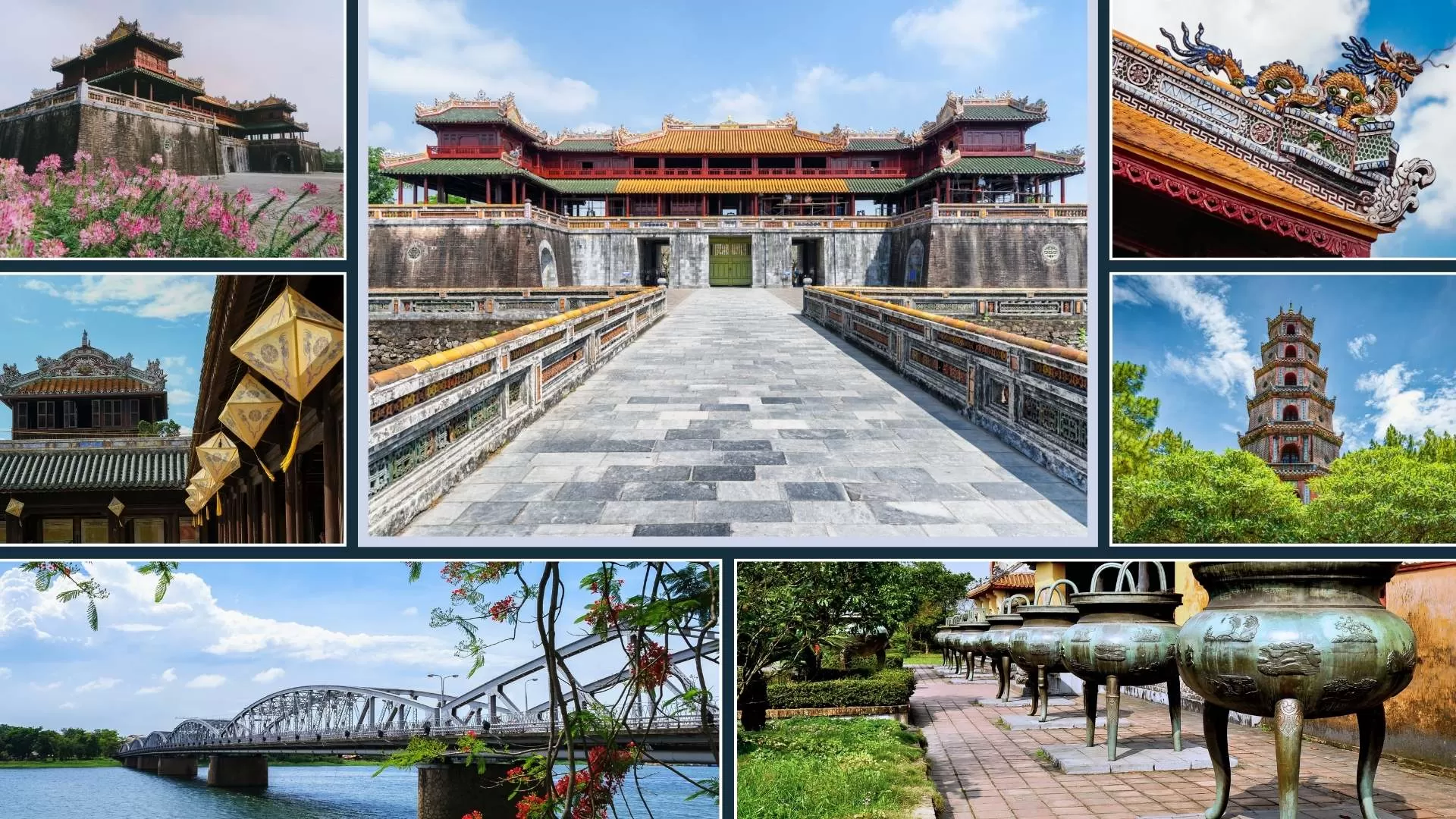
Beyond its magnificent royal tombs, Hue is also known for its gorgeous landscapes, ancient landmarks, and cultural treasures that captivate visitors from all over the world. Here are some must-visit attractions in Hue that you shouldn’t miss
Imperial City (The Citadel): A UNESCO World Heritage Site, the Imperial City was once the political and cultural center of the Nguyen Dynasty. With its grand palaces, temples, and impressive gates, it offers a glimpse into Vietnam’s royal past.
Thien Mu Pagoda: Perched on a hill overlooking the Perfume river, Thien Mu Pagoda is one of the most iconic symbols of Hue. Its seven-story tower and peaceful surroundings make it a perfect spot for sightseeing and reflection.
Perfume river: Flowing through the heart of Hue, the Perfume river provides a scenic backdrop to the city’s historical sites. A boat cruise along the river at sunset is a must for a truly enchanting experience.
Dong Ba market: For a taste of Hue’s local life, visit Dong Ba market, the city’s largest and oldest market. Here, you can find everything from beautiful handicrafts to delicious Hue specialties like bun bo Hue and banh beo.
Lang Co beach: Located just outside Hue, Lang Co beach is a stunning coastal paradise with white sandy shores and crystal-clear waters. It’s an ideal getaway for those looking to relax and enjoy nature.
Explore more beautiful landscapes in Hue: Things to do in Hue
Practical tips for visiting the imperial tombs in Hue
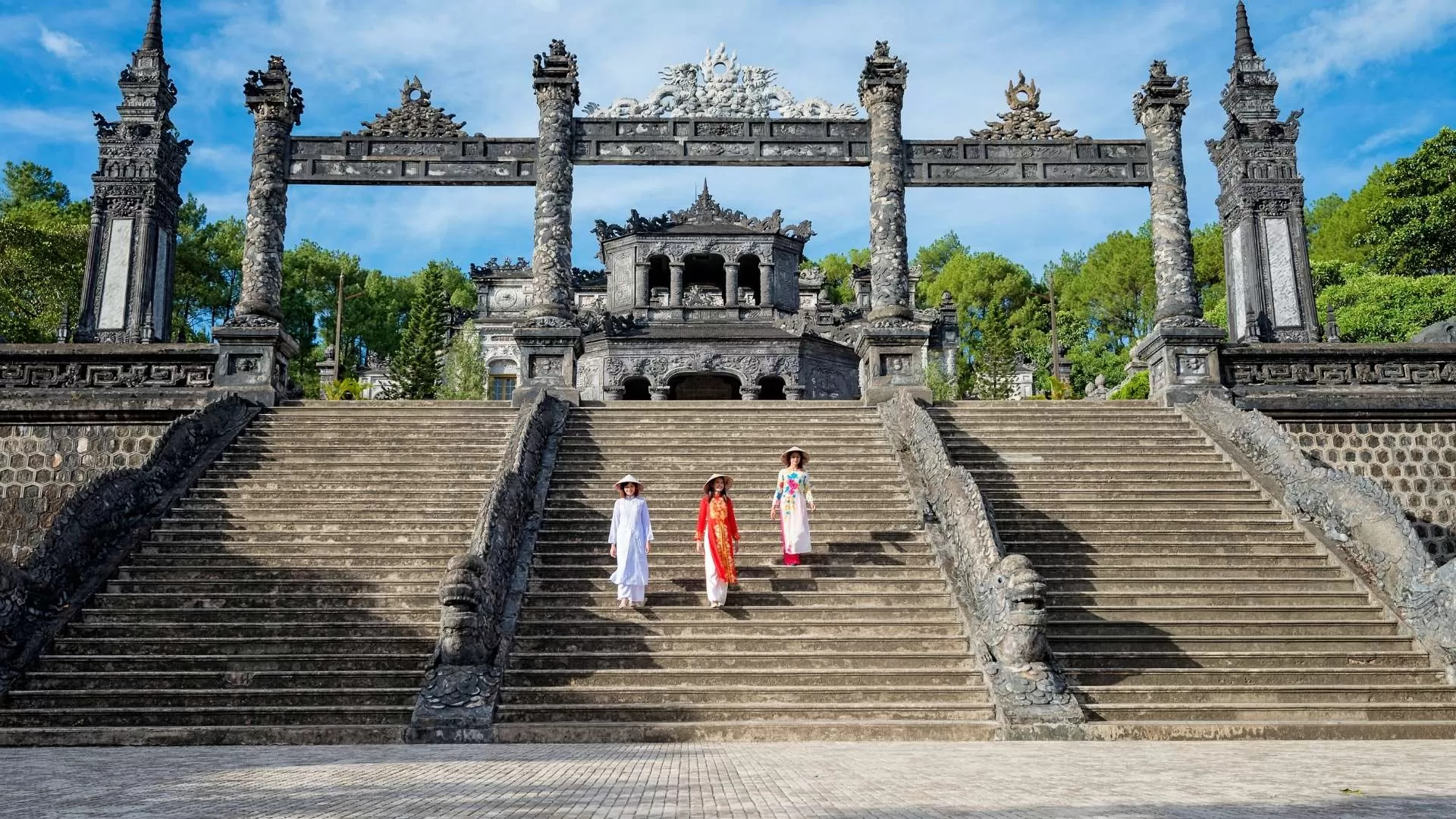
To fully enjoy the historic charm of the imperial tombs in Hue, it is essential to keep a few notes in mind. Here are a few practical tips to ensure a smooth and enriching visit.
Dress modestly and respectfully
Wear elegant, conservative clothing that covers your shoulders and knees to show respect for local customs. Many historic sites in Hue, including tombs, temples, and pagodas, hold deep cultural and spiritual significance. To fully experience being a local, you can try wearing “ao dai” to visit these sites.
Maintain a quiet and respectful attitude
To preserve the peaceful ambiance of these sacred sites, avoid loud conversations and unnecessary noise. Show reverence, especially in areas dedicated to worship or ancestral commemoration.
Prepare for extensive walking
Some imperial tombs in Hue cover vast areas, requiring long walks through gardens, courtyards, and hilly landscapes. Wear comfortable shoes and travel light to enhance your experience.
Follow photography rules
While most tombs permit photography, some areas may have restrictions. Always check for signs or ask staff before taking pictures, especially inside temples or shrines.
Consider a local guide for a deeper experience
A knowledgeable guide can provide fascinating insights into the history, architecture, and symbolism of each tomb, enriching your journey through Hue’s imperial heritage.
The imperial tombs in Hue are more than just resting places - they are masterpieces of history, architecture, and culture. Each tomb offers a unique insight into the lives of the Nguyen emperors, whether through the intricate details of Khai Dinh’s, the tranquil landscapes of Minh Mang’s, or the poetic elegance of Tu Duc’s.
For a seamless and enriching experience, explore these Hue imperial tombs with Hanoi Voyages, ensuring a well-planned and unforgettable journey through Vietnam’s royal past.
Dream about your trip to Asia, in private
We are here to make it happen with youFREE QUOTE, WITHOUT OBLIGATION








.webp)

